- SAP Interview Questions
- SAP MDG Interview Questions
- SAP C4C Interview Questions
- SAP ISU Interview Questions
- SAP Analytics Cloud Interview Questions
- SAP CO Interview Questions
- SAP CPI Interview Questions
- SAP VIM Interview Questions
- SAP SCM Interview Questions
- SAP IBP Interview Questions
- SAP RAR Interview Questions
- SAP TM Interview Questions
- SAP CPI Architecture
- What is SAP Transportation Management ?
- What is SAP SCM?
- What is SAP PO - SAP Process Orchestration Architecture
- SAP PO Interview Questions
- What is SAP EDI?
- What is SAP Vistex?
- What is SAP Cloud Platform?
- What is SAP MRP - SAP MRP Tutorial
- What is SAP BTP?
- What is SAP Fieldglass?
- What is SAP C4C?
- What is SAP ISU
- What is SAP Solution Manager?
- SAP Analytics Cloud Tutorial
- SAP HCM Interview Questions
- What is SAP APO?
- SAP CPI Tutorial - A Beginner’s Guide
- What is SAP CAR?
- What is SAP PS - SAP PS Tutorial
- What is SAP IBP?
- What is SAP CPQ
- What Is Sap Netweaver
- What Is SAP BRIM
- What is SAP Master Data Governance (MDG)?
- What is SAP VIM?
- SAP MDG Architecture
- What is SAP MDG
- SAP HCM Tutorial
- SAP MDG Tutorial
- SAP TRM Interview Questions
SAP PS (Project System) is a module in the SAP ERP system that is designed to facilitate project administration. SAP PS helps businesses to allocate resources, track progress, manage projects, and monitor costs. It provides organizations with a comprehensive toolset to manage initiatives from the planning phase through execution and completion. The module's ability to provide an end-to-end view of projects makes it an invaluable asset to these industries. It enables them to maintain a tight grip on costs, schedules, and resources, ensuring the successful completion of projects.
If you're interested in pursuing a career in SAP PS, it's necessary to prepare for the interview earlier. SAP PS interview questions are designed to test your knowledge of the module's functionalities, capabilities, and applications. This blog provides a comprehensive guide to SAP PS interview questions and answers, covering the most frequently asked questions.
Top 10 Frequently Asked SAP PS Interview Questions
- What is SAP PS, and what are its key features?
- What is a Work Breakdown Structure (WBS) in SAP PS?
- What are the parameters of the Project System (PS)?
- How is the SAP PS system's Selection Profile used?
- What do you mean by MRP run?
- What is Project Coding Mask?
- What is the transaction number in SYSTEM used for?
- What is the relationship in SAP PS?
- What is unit costing?
- How many structures can you create in SAP PS?
SAP PS Interview Questions For Freshers
1. What is SAP PS, and what are its key features?
SAP PS is a project management feature of SAP ERP that allows organizations to plan, start, and finish their projects. Some of the most important elements of SAP PS are:
- Project Planning
- Resource Allocation
- Project Execution
- Project Controlling
| If you want to enrich your career in SAP PS, then visit Mindmajix - a global online training platform: SAP PS Training This course will help you to achieve excellence in this domain. |
2. What is a work breakdown structure (WBS) in SAP PS?
In SAP PS, a Work Breakdown Structure (WBS) is a group of project tasks that can be assigned to a cost center or project team. A WBS is a way to divide the tasks of a project into smaller, easier-to-manage parts. To plan a project well, you need a WBS because it helps you determine the project's goals, deliverables, and milestones.
3. How can SAP PS be used to handle different kinds of projects?
SAP PS can be used to manage a wide range of project types, including:
- IT projects
- Engineering and construction projects
- Marketing and advertising projects
- Research and development projects
- Capital investment projects
- Event management projects
4. How do you create a project in SAP PS?
To create a project in SAP PS, you need to go to transaction code CJ20N and follow these steps:
- Enter the project definition and description.
- Enter the project start and end dates.
- Define the project structure by creating WBS elements.
- Assign resources to the project.
- Define project milestones.
- Set project budgets.
5. How do you track project progress in SAP PS?
To track project progress in SAP PS, you can use a range of tools, including:
- Project status reports
- Resource utilization reports
- Cost reports
- Network Diagram
- Progress Tracking
- Earned Value Analysis (EVA)
SAP PS gives you several tools and ways to track the progress of a project. Your chosen method will rely on your needs and the project's requirements.
6. What are the parameters of the Project System (PS)?
The parameters of SAP PS can be broadly categorized into the following categories:
- Organizational Parameters: This includes project definition, profile, type, and WBS.
- Time Parameters: This includes project start and finish dates, scheduling options, and phases that constitute the project schedule.
- Financial Parameters: This includes the project cost center, cost element, and currency that define the project budget, costing, and accounting techniques.
- Network Parameters: This includes project network type, activity type, and predecessor/successor linkages.
- Material Parameters: This includes material type, master record, and stock availability that characterize the project's materials.
- Resource Parameters: This includes resource type, master record, and availability.
- Information Parameters: This includes project status, progress reporting, and documentation needs.
7. What do the terms Activities, NTW, and WBS represent?
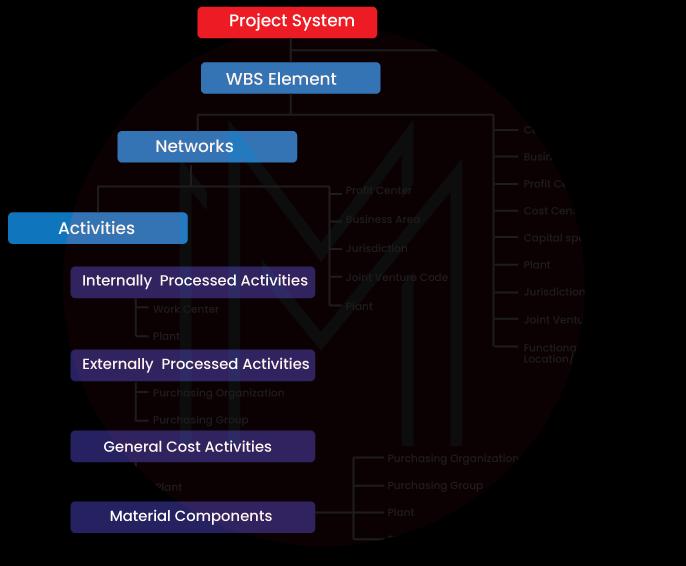
When comparing the capabilities and features offered by the SAP system, two distinct options stand out: the Work Breakdown Structure (WBS) and Network Topologies.
For example, a WBS structure is useful for hierarchically managing a project's finances, while a network is necessary for capacity planning. Depending on the unique requirements, a WBS structure, one or more networks (or NTW), or a combination of the two may be the best option for mapping a project.
8. What is the menu path and T. Code for Projects' special characters?
The menu path to define special characters for projects in SAP PS is as follows:
IMG (Implementation Guide) > Project System > Structures > Operative Structures > Work Breakdown Structures > Project Coding Mask >Define Special Characters
The transaction code (T. Code) to directly access this screen is: OPSK
| Check out SAP ERP Interview questions and answers to be helpful for the interview. |
9. How might PS and COPA be connected? How will the settlement function once PS is linked to Controlling via COPA?
PS and COPA can be linked through the settlement process, where the project costs are settled to COPA segments. When PS is tied to Controlling through COPA, settlement occurs via a profitability segment. These Level 1 WBS elements are settled to the PSG, while Level 2 WBS elements are settled to the WBS element, which is preferred over Level 1. The level 1 WBS/project will be settled to the PSG, while variances will be linked to COPA.
10. Does the Project system integrate with other SAP ECC modules?
Yes. The SAP ECC Project System (PS) module is integrated with various other modules, including Controlling (CO), Finance (FI), Sales and Distribution (SD), Material Management (MM), and Human Capital Management (HCM). This integration ensures a seamless data flow and eliminates the need for duplicating data between the modules. For example, the PS module can use data from the CO module for cost allocation and vice versa. Additionally, like the MM module, the PS module can interact with the SD module for sales orders.
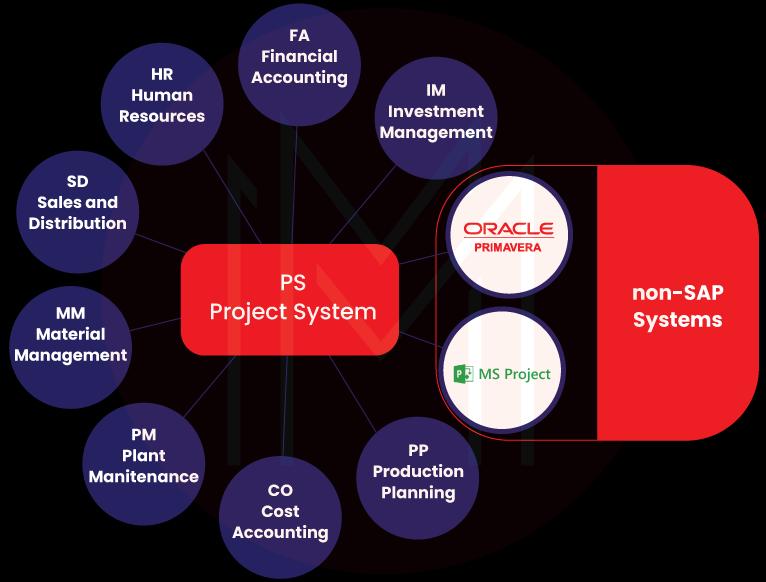
SAP PS Interview Questions For Experienced
11. How is the SAP PS system's Selection Profile used?
A Selection Profile is used in the SAP PS system to choose a group of objects for further processing, such as reports or data extraction. It is a set of criteria for making a choice that has already been set up and can be saved and used for different jobs.
In SAP PS, a Selection Profile can include objects like WBS elements, networks, tasks, and projects, among other things. It can also have different areas and filters depending on the user's wants.
12. What purpose do cost components serve within the SAP PS system?
The purpose of cost components in the SAP PS system is to simplify the tracking and analysis of project costs by showing how costs are distributed among different cost elements. This information helps identify cost drivers and areas where costs can be reduced. Additionally, combining cost planning and cost components enables more precise cost forecasting for future projects, which aids in budgeting and planning.
13. What do you mean by MRP run?
The SAP PS system uses MRP (Material Requirements Planning) or planning run to generate procurement proposals, including purchase requisitions or planned orders, for the materials required in a project. The MRP run considers different factors, such as the project schedule, the project's BOM (Bill of Materials), inventory levels, and other relevant data to calculate the material requirements.
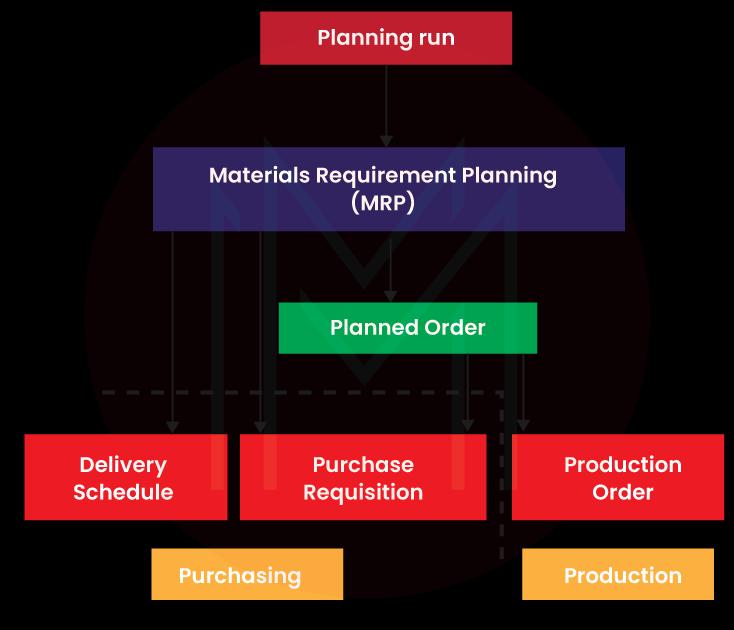
14. What are the different types of Currency SAP PS can handle?
SAP PS can handle four different types of currencies: controlling area currency, project currency, object currency, and transaction currency.
15. What is resource-related billing in SAP PS?
The resource-related billing tool in SAP PS lets you charge for project resources like labor, materials, and equipment based on how they were actually used in the project. This method of billing works well when the project scope or needs need to be clarified at the start, and the customer is willing to pay only for the resources that were actually used.
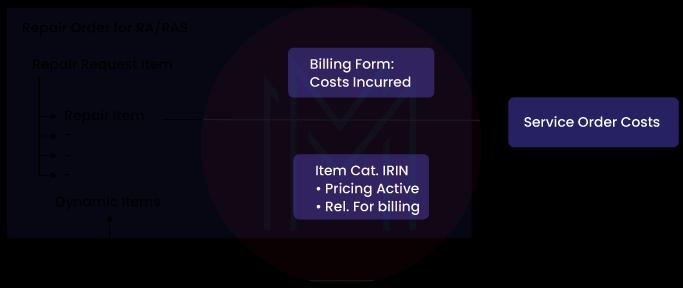
16. Where are time profiles defined?
In SAP PS, the system defines time profiles by navigating to the customizing settings via transaction code OPSA or the menu path.
SPRO -> IMG -> Project System -> Dates -> Define Time Profiles.
Time profiles in SAP PS are used to specify the daily and weekly schedules for a given project or network. They help you figure out when you should begin and end working on a certain task or phase of a project.
17. Explain briefly about the SAP PS Gantt chart?
In SAP PS, A Gantt chart is a visual depiction of a project schedule that shows the beginning and ending times of tasks, the time taken for each task, and any interdependencies between tasks. The Gantt chart is an effective tool for project managers to track the project's development and spot any possible snags. Project team members can better see the big picture and grasp their roles and deadlines with this tool. You can view the Gantt chart using the SAP PS transaction codes CJ20N and CN20N.
18. What is project coding mask?
Project Coding facilitates the presentation of complex project numbers. Additionally, they can be used to designate the hierarchy position of a WBS element.
We can generate a mask for each key you intend to use in project-related coding. Project Definition, as well as WBS Element, must be unique within the SAP system. The project code and hierarchy are adjustable to a certain point in the project's status.
Project Code has two parts.
Part 1: Project Coding Mask (Project Identifier)
Part 2: Serial number (Project Number)
19. What is the difference between LSMW and BAPI?
| LSMW | BAPI |
| LSMW is used to migrate data from legacy systems to SAP. | BAPI is used to connect third-party applications to SAP. |
| LSMW is a tool that helps in data migration by using legacy system data. | BAPI is a standard interface for accessing SAP business objects. |
| LSMW is mainly used for uploading large volumes of data in batch mode. | BAPI is used for real-time integration between SAP and non-SAP systems. |
| LSMW is typically used by functional consultants who are not necessarily familiar with programming languages. | BAPI requires programming expertise and is typically used by developers. |
| LSMW is a free tool that comes with the SAP system. | BAPIs can be free or require additional licensing fees, depending on the specific BAPI being used. |
20. How do I calculate WIP in PS for all WBS associated with a specific project? Is there a specific Tcode in ECC 6.0?
Follow these steps to figure out Work in Progress (WIP) in SAP PS for all WBS that belong to a certain project:
- In ECC 6.0, navigate to the Project System module.
- To access the project definition, enter transaction code CJ20N.
- Select the 'Costs' tab and the 'WIP Calculation' icon from the project definition's 'Costs' tab.
- Choose the 'WBS Element Selection' tab next.
- Select the WBS elements for which you want to calculate the WIP in the 'WBS Selection' tab.
- Select 'Multiple WBS' and enter the project number to which the WBS elements belong. To execute the report, click 'Execute.'
- The report will display the WIP values for the specified WBS elements.
Advanced SAP PS Interview Questions
21. What is the transaction number in SYSTEM used for?
To quickly access a specific SYSTEM page, you only need to know the corresponding transaction code. By entering the Transaction Code and then pressing "Enter," you can bypass the standard menu and get straight to the desired transaction. The VA22 transaction code can be used to access the Change Quotation screen. However, a Sales document is created with the VA01 transaction code in SYSTEM.
22. What is the relationship in SAP PS?
Relationships between project activities or tasks can be set up in many different ways in SAP PS (Project System). These connections describe the interdependencies between tasks and, thus, the order in which they must be carried out to complete the project successfully.
Some of the common types of relationships in SAP PS are:
- Finish to Start (FS) - This is the most common type of relationship where the next action can't begin until the activity that came before it is done.
- Start to Start (SS) - In this relationship, the next activity can't begin until the action that comes before it has already started.
- Finish to Finish (FF) - In this case, the next action can't finish until the one before it is done.
- Start to Finish (SF) - This is a less common link where the activity that comes after the activity that came before it can't end until the activity that came before it starts.
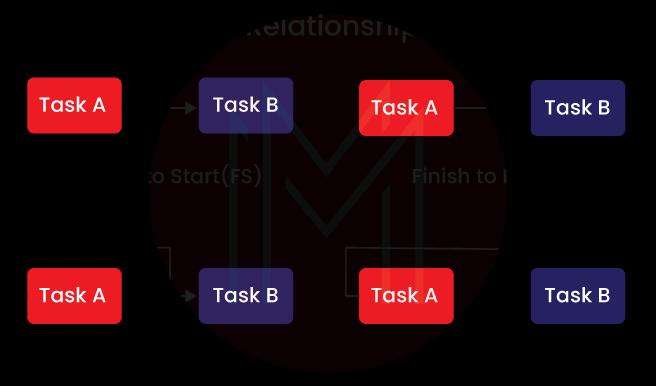
23 . Why does SAP PS have network activity types, and how do you create them?
Network activity types are used to describe the different kinds of tasks that can be done in a project. They are used to assign prices and resources to specific tasks and keep track of how things are going.
In SAP PS, you need to go to transaction code KL01 and take these steps to make a network activity type:
- Enter the activity type code and description.
- Define the planning and costing parameters.
- Assign the activity type to a cost center or an order.
- Save the activity type.
24. What is a milestone trend analysis in SAP PS, and how do you do one?
SAP PS includes a milestone trend analysis feature that may be used to monitor project milestones and spot patterns in their completion. It aids project managers in foreseeing problems and devising solutions to keep the project on schedule.
Follow these instructions to do a milestone trend analysis in SAP PS using transaction code CJ30:
- Select the project for which you want to perform the analysis.
- Select the "Milestones" tab.
- Click on "Milestone Trend Analysis."
- Review the analysis results and take appropriate actions.
25. What is unit costing?
In SAP PS, unit costing can be used to calculate the cost of individual project activities or work packages. This is accomplished by designating cost elements, such as labor, material, and overhead costs, to each activity or work package. The unit cost is then determined by dividing the total cost of the activity or work bundle by the planned or actual quantity of units produced.
26. What is the significance of settlement rules in SAP PS?
An SAP PS settlement rule allocates costs and revenues from a Work Breakdown Structure (WBS) element to another object like a cost center, an asset, or another WBS element. The costs of a project need to be correctly allocated to the appropriate objects; thus, it's up to the settlement rules to establish how that money will be dispersed.
27. What do you think Business Areas mean? Use an example to explain.
In SAP, a "business area" is an organizational unit representing a particular part of a company's operations. It lets businesses report on their operations and finances differently based on product lines, geographic areas, or business functions.
For example, a company that makes and sells more than one type of product may use business areas to track how each type of product is doing financially. This lets the company look at each product line's sales, income, and costs and make smart choices about marketing, pricing, and developing new products.
28. What is the purpose of an SAP PS project status report, and how is it created?
A project status report provides stakeholders with an overview of the project's status and progress. It contains details like project milestones, budget and cost status, and resource utilization.
To create a report on the status of a project in SAP PS, go to transaction code S_ALR_87013558 and follow these steps:
- Enter the project and reporting period.
- Define the report layout and formatting.
- Choose the data fields you want to add to the report.
- Generate the report.
29. How do you assign resources to a project in SAP PS?
To assign resources to a project in SAP PS, you need to go to transaction code CJ20N and follow these steps:
- Go to the WBS element where you want to assign the resource.
- Click on the "Activities" tab.
- Click on "Assignments" and then "Resource Assignment."
- Enter the resource name and the number of hours or units.
- Save the assignment.
30. How many structures can you create in SAP PS?
SAP PS allows users to create different structures to help with project management, including networks, work breakdown structures (WBS), cost breakdown structures (CBS), and milestones.
Interview Preparation Tips
Here are three most important tips to help you prepare for your SAP PS interview:
- Review the basics: Ensure that you have a firm grasp of the fundamentals of SAP PS, including project structures, project planning, and project execution.
- Understand the integration: Familiarize yourself with how SAP PS integrates with other SAP modules such as SAP PP, SAP MM, and SAP FI.
- Brush up on your technical skills: Ensure you know how to set up and customize SAP PS and understand technical ideas like ABAP code.
- Prepare for specific scenarios: Consider how you would manage specific circumstances that could arise in an SAP PS environment, such as managing resource constraints and change requests.
- Be ready to discuss your experience: Be ready to talk about your experience with SAP PS, including the projects you've worked on and the results you got.
- Practice with sample questions: Practice your answers to top SAP PS interview questions found online in order to feel more at ease and confident during the interview.
| Check out SAP MM Interview questions and answers to be helpful for the interview |
Most Commonly SAP PS Asked FAQs
1) What does PS stand for in SAP?
PS stands for Project System in SAP.
2) Why is SAP PS required?
SAP PS is required to manage and control projects from planning to execution and completion.
3) What is the SAP PS and MM module?
SAP PS and MM are two different modules in SAP. SAP PS is used for project management, while SAP MM is used for materials management.
4) How to implement SAP PS?
SAP PS implementation involves creating a project definition, work breakdown structure, and network and assigning resources and costs.
5) What is the WBS element in SAP PS?
WBS (Work Breakdown Structure) is a fundamental element of SAP PS that represents a project's hierarchical structure and its various sub-components.
6) What are the three levels of WBS?
The three levels of WBS in SAP PS are
- Project level,
- Summary level, and
- Detailed level.
7) Can we delete the WBS element in SAP?
Yes, deleting a WBS element in SAP PS is possible, but it requires careful consideration and analysis of its impact on the entire project.
8) What is the SAP PS workflow?
SAP PS workflow is a set of sequential steps or activities that automate the project management process, such as project approvals and notifications.
9) What is SAP PS validation?
SAP PS validation checks if the project data entered by users comply with predefined rules and criteria.
10) What is the process flow in SAP PS?
Process flow in SAP PS involves creating a project, defining its structure using WBS, assigning resources and costs, scheduling activities, and monitoring progress.
Conclusion
Mindmajix provides a detailed list of 30 SAP PS interview questions and answers to assist candidates in preparing for their interviews. The questions cover a wide range of topics, including project structures, planning, execution, integration with other SAP modules, technical skills, experience, and more. The answers provided are comprehensive and offer in-depth explanations, making it easier for candidates to grasp the concepts. SAP PS interview questions and answers are a valuable resource for anyone looking to prepare for an interview in this field. Therefore, it is essential to prepare well and give your best effort! Enroll in the SAP PS training course to start learning all the modules that are helpful in the process of preparing to ace the interview.
 On-Job Support Service
On-Job Support Service
Online Work Support for your on-job roles.

Our work-support plans provide precise options as per your project tasks. Whether you are a newbie or an experienced professional seeking assistance in completing project tasks, we are here with the following plans to meet your custom needs:
- Pay Per Hour
- Pay Per Week
- Monthly
| Name | Dates | |
|---|---|---|
| SAP PS Training | Jan 24 to Feb 08 | View Details |
| SAP PS Training | Jan 27 to Feb 11 | View Details |
| SAP PS Training | Jan 31 to Feb 15 | View Details |
| SAP PS Training | Feb 03 to Feb 18 | View Details |

I am a passionate content writer at MindMajix. I write articles on multiple platforms such as Power BI, Blockchain, Fintech, Machine Learning, Artificial Intelligence and other courses. My work covers a variety of niches including the IT industry, E-commerce, education, fashion, product descriptions, well-researched articles, blog posts, and many more. Basically, I put love into words and help you connect with the people + moments that matter. You can find me on my Linkedin.















